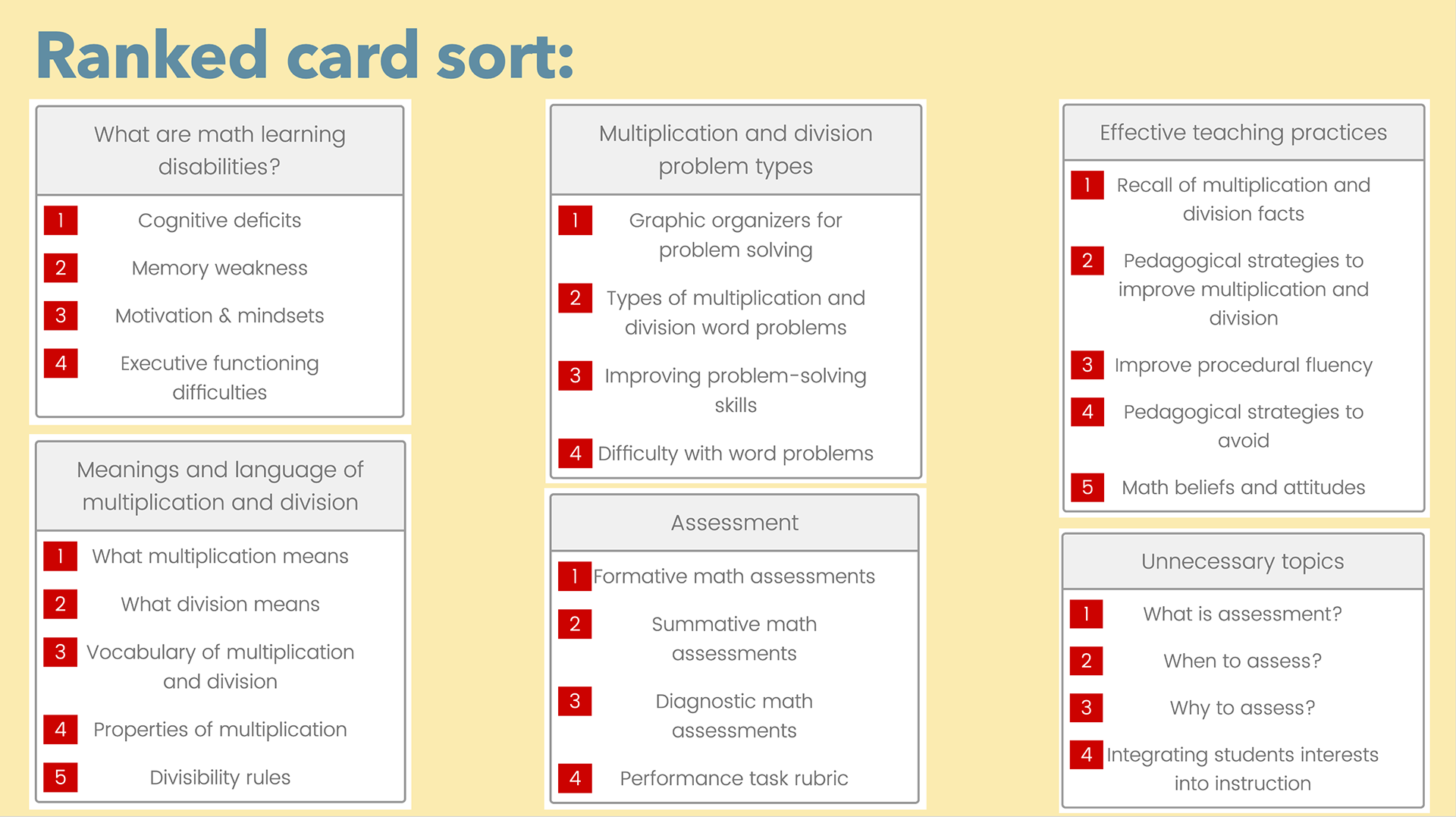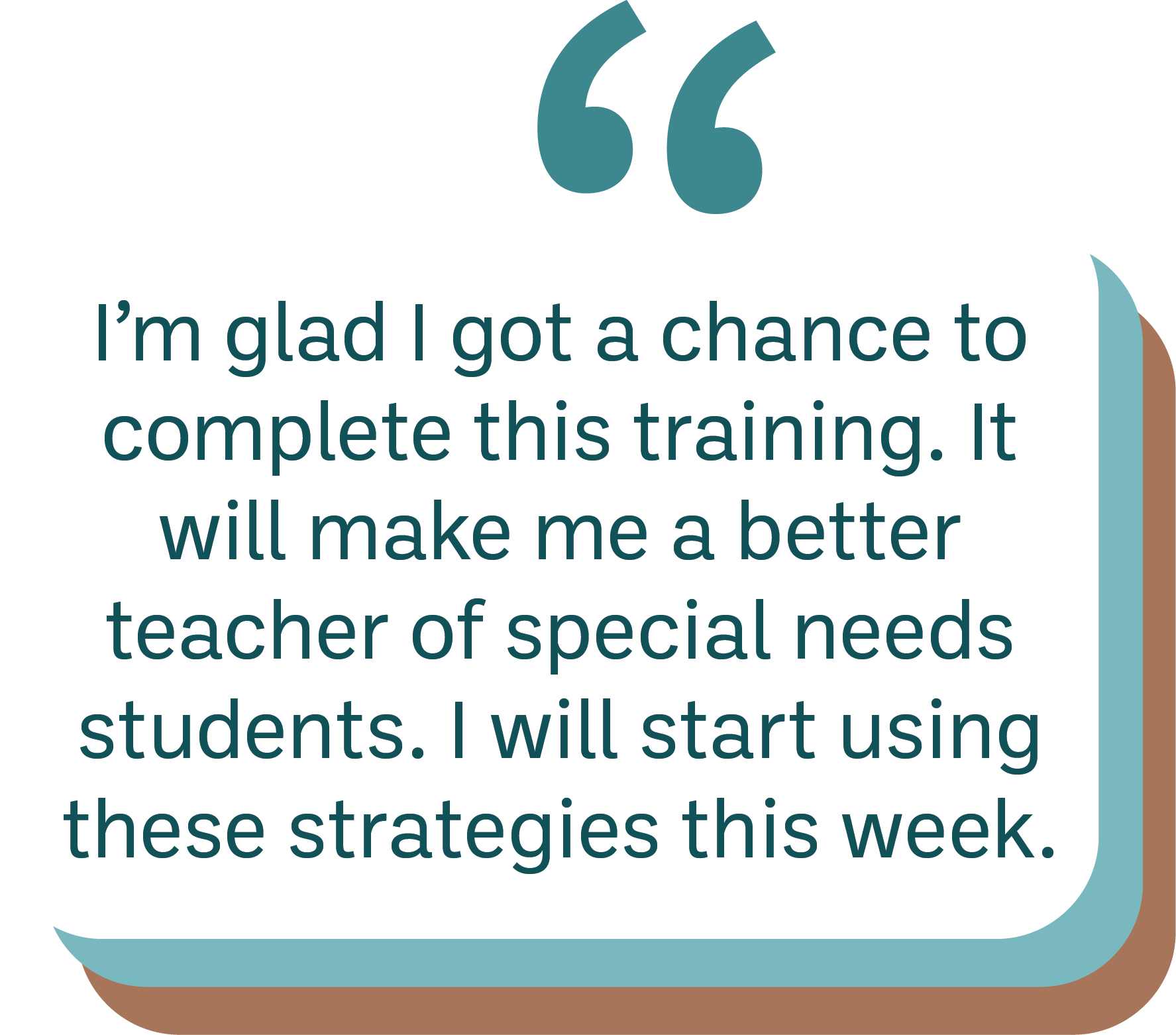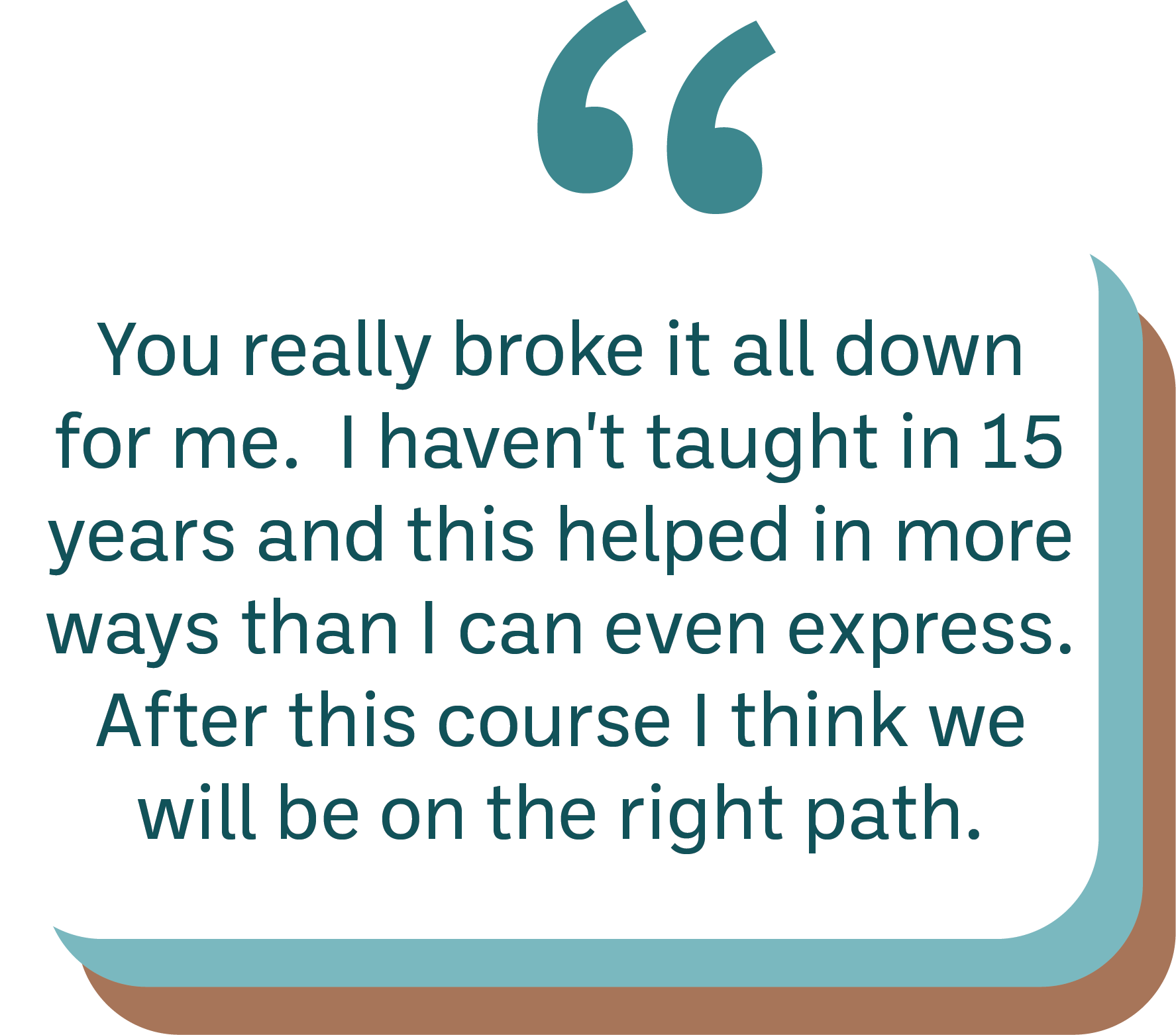This eLearning course provides special education teachers with effective strategies to teach multiplication and division, empowering them to support their students' mathematical development.
Responsibilities: Instructional Design, eLearning Development, Content creation, Evaluation
Target Audience: 3rd - 5th grade special education teachers who are struggling to teach multiplication and division
Tools Used: Articulate Storyline, Adobe inDesign, Adobe XD, Adobe PremierPro, Thinkific, Audacity, MindMeister, Qualtrics
Problem:
Only 15% of students with disabilities reach “proficient” or “advanced” math levels, particularly with multiplication & division. 58% of teachers feel unprepared to teach math to students with disabilities.
Solution:
I used research data to design a 6-week long eLearning course and online learning community, which has 408+ enrolled special education teachers and a 92% satisfaction rate.
My Design Process
Analyze
Before developing content for the course, I conducted user research to gain knowledge of educators’ needs and their challenges and reflections on teaching math. I ran a generative study to explore new ideas and needs related to teaching multiplication and division.
First, I surveyed 25 teachers and conducted semi-structured focus groups with 4 teachers to uncover their challenges and learn what product would help overcome those challenges. Data from the survey, focus group, and empathy map suggested creating an online course.

Next, I conducted a diary study and artifact analysis with 6 teachers to understand their content needs by capturing in-context naturalistic data. I pulled out key concepts and saw what materials teachers have available to teach those concepts.
Teachers then completed a card sort, which helped me to understand the important content and how to organize it. Using the list of potential topics I generated from the diary study and artifact analysis, teachers grouped and ranked the topics.
After conducing this research, I had a structure to begin building my online course along with the following learning objectives:
Objective #1
By the end of this course, teachers will be able to name at least three reasons why students with disabilities struggle to learn multiplication and division.
Objective #2
By the end of this course, teachers will be able to develop and implement a unit plan that incorporates evidence-based practices for teaching multiplication and division to special education students
Objective #3
By the end of this course, teachers will be able to effectively use at least two instructional tools or resources (e.g., manipulatives, visual aids, or technology) to support the teaching of multiplication and division to special education students
Objective #4
By the end of this course, teachers will be able to successfully assess their students to monitor the progress of special education students in multiplication and division.
Design
I outlined the instructional strategies, content, and assessment methods that will be used to achieve the learning objectives using storyboarding techniques in Microsoft Word.
Design Approach:
I adopted a learner-centered approach that incorporated adult learning theories, such as Andragogy and Self-Directed Learning. This approach ensures that course content is relevant, engaging, and tailored to the unique needs of adult learners.
To accomplish this, I emphasized practical, real-world applications of the subject matter and encourage learners to apply course content to their teaching throughout the course.
In addition, I provided frequent opportunities for learners to draw from their existing knowledge and experience, fostering a collaborative learning environment that supports the sharing of insights and perspectives.
I designed the course to include the following components:
- 6 video and text-based modules
- A workbook that accompanies each module for students to take notes
- Practice quizzes for each of the 6 weekly modules
- A discussion forum where people can ask questions and support one another
- A certificate of completion
- Automated emails that let enrolled students preview the upcoming content, remind them to log in and to through the next module, and allow them to track their progress



Develop
After designing the slides, I created and edited video narrations of each slide using Adobe Premiere Pro.
I developed an accompanying workbook and a curated list of suggested readings using Adobe InDesign to help students navigate the course more effectively, achieve a deeper understanding of the content, and broaden their knowledge within the wider field.
Finally, I created automated emails using ConvertKit. I set up a sequence that automatically starts when someone enrolls in the course and emails them reminders, relevant resources, and motivational messages at strategic intervals throughout the course. This personalized communication helped maintain learner engagement, provided timely support, and created a sense of accountability.
Implement
I chose to host my eLearning course on Thinkific, a learning management system (LMS), due to its extensive customization options, seamless integration capabilities, and robust student engagement features. Since I already had all of my course materials designed and developed, it was quick and easy to upload and organize everything within Thinkific.
Evaluate
I used a number of methods to evaluate the success of my course and assess learning.
Pre-Post Tests
I assigned a pre- and post-test that teachers completed at the start and end of the course. Sample questions on the pre-test include:
- After taking this course, I will be able to…
- How experienced do you feel in this course's subject matter on a scale from 1 (not experienced at all) to 5 (very experienced)?
- What's the biggest roadblock or challenge you have with teaching multiplication and division right now?
- What is your role? Select all that apply.
- What grade do you work with?
- Is there anything else you want me to know about you?
Weekly Quizzes
Teachers took a quiz after each module as a type of formative assessment. Quizzes included a mix of multiple-choice, open response, true/false, and matching questions.
Their quiz performance not only allowed each participant to track their own learning, but it also enabled me to discern which content posed the greatest challenges for learners and identify areas for improvement in my course by clarifying specific concepts.
When I implemented changes and observed users performing better on the corresponding questions, it confirmed that the modifications improved my content. This process was a crucial aspect of my data-driven approach to eLearning.
Results and Takeaways
In the end, I designed and launched 6-week long eLearning course and online learning community, which has 408+ enrolled special education teachers and a 92% satisfaction rate.
This course resulted in special educators' improved ability and confidence supporting struggling learners and students' academic success.
User Testimonials









